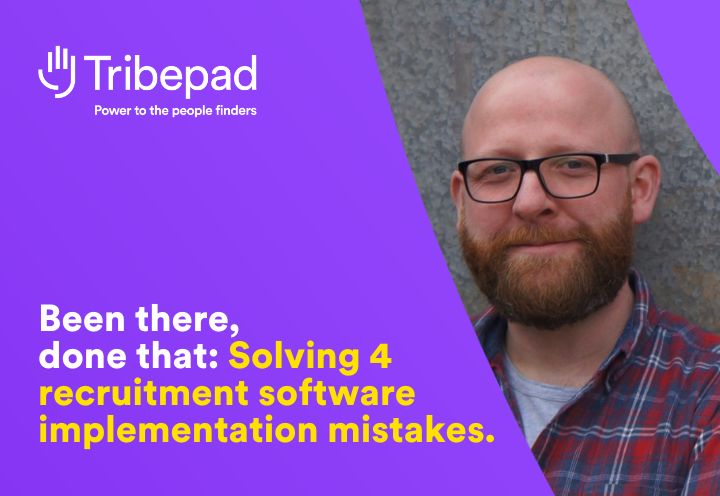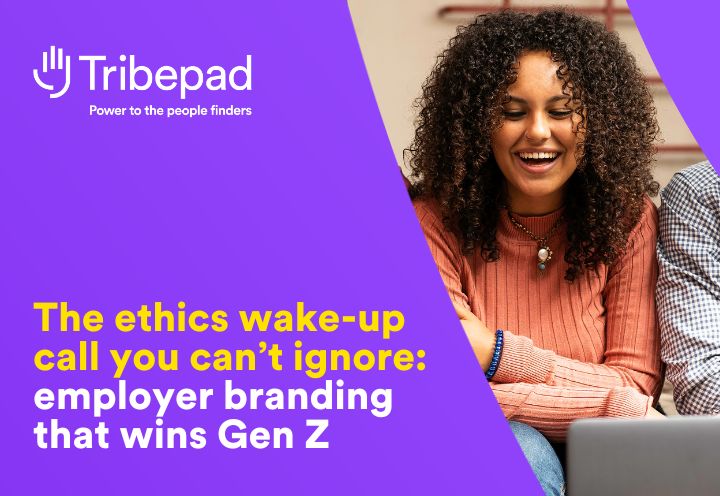The world of talent acquisition is shifting fast – and ad hoc hiring won’t cut it anymore. If you want to attract, hire and keep brilliant people, you need a solid strategy. Here’s how to build talent acquisition strategies that work in the real world.
Strategic talent acquisition isn’t just about filling roles faster. It’s about evolving hiring into a credible business driver — solving long-term workforce challenges, improving retention, and giving your organisation a competitive edge.
It’s what separates tactical, reactive recruitment from forward-looking people strategies.
But most teams aren’t there yet.
You’re buried in requisitions. You’re understaffed. You’re sprinting just to keep up. You want to be more strategic, but the fire-fighting never stops long enough to lift your head.
That’s where talent acquisition strategies come in.
This isn’t about abstract theory or fluffy HR frameworks. It’s a practical, step-by-step guide to building a real-world TA strategy. One that helps you attract the right people, build better processes, and raise recruitment’s profile as a strategic partner.
Keep reading to learn:
- What talent acquisition strategies actually are
- An eight-step roadmap to fleshing out your own talent acquisition strategies
- The five building blocks that make a successful future-ready TA strategy
Let’s go.
Creating talent acquisition strategies that work
What is a talent acquisition strategy?
A talent acquisition strategy is a strategic plan that outlines how your organisation hires and retains the people you need. It’s one of the core components that differentiates talent acquisition versus recruitment.
- Recruitment focusses on filling current vacancies efficiently and effectively. It’s shorter-term and tactical: how can we get the people we need now, fast?
- Talent acquisition focusses on building a workforce that meets the organisation’s long-term strategic needs.
Most teams aspire to the latter, the key word there being aspire. Recent Josh Bersin data shows that:
- 32% of TA leaders are involved in strategic workforce planning
- 42% believe their company has no workforce plan
- 46% say “they’re running around to keep up”
Talent leaders want to operate more proactively, but they’re often in the sticky middle — overburdened by hectic ad-hoc hiring and under-resourced without the time or tools to evolve. Read more: Business leaders are breaking recruitment. Here’s the fix.
In principle, TA and business leaders want the same thing. To hire brilliant people, while saving the organisation time, money, and hassle. But that message often gets lost, with recruitment treated as a cost-centre rather than a strategic partner.
Talent acquisition strategies are the first tool in your toolbox if you want to evolve the impact, perception, and credibility of hiring. And evolve your own role, to focus less on admin and more on people (which is why you got into this gig in the first place, right?)
Let’s talk about what your TA strategy should include.
How to develop a talent acquisition strategy: 8 steps
You can’t hire well by accident. Not consistently. Not fairly. Not fast enough to keep up with what the organisation needs.
An effective talent acquisition strategy gives you structure and direction. So you’re not always scrambling, firefighting, or reinventing the wheel. Here’s how to build one that sets you up for better hires, better retention, and better business impact.
1– Evaluate your ‘now’
Start by auditing where you are today. Look across every step of the hiring process to understand:
- What’s working?
- Where are the gaps?
- What’s causing delays?
- What does the data say?
- Who’s involved and where?
- What are their pain points?
- Where could you work smarter?
This isn’t just a recruitment team exercise. Pull in feedback from candidates, hiring managers and HR to build a rounded view of how hiring works right now.
This is your foundation for a talent acquisition strategy built on facts, not assumptions.
2 – Identify future needs
Your hiring strategy should line up with your business strategy. If it doesn’t, it won’t deliver what your organisation needs. Or you’ll always be racing to catch up. AKA: you’ll be stuck being reactive, not proactive.
Work closely with leadership and (if you’ve got them) HRBPs and workforce planners.
- What’s the growth forecast?
- What are the strategic priorities?
- What’s changing in the organisation, industry, or regulatory landscape?
- What skills will be needed six months from now, or two years?
- Who’s likely to retire or move on?
- What internal development is underway?
You can’t pipeline if you don’t know what’s coming. And if you’re not ready for what’s coming, you’ll miss the window of opportunity.
3 – Map the candidate journey
To improve anything, you need to map everything. From first touchpoint (maybe your job ad or careers page) to first day — document every step candidates go through. Then zoom in:
- What do they experience?
- Where do you lose people?
- Where are the friction points?
- Where are drop-offs happening?
Then fix the easy wins and build your TA strategy around improving the rest. Experiences shape outcomes.
4 – Build personas
Not just job specs. Real people. Get clear on who you’re trying to hire – both what you want from them, and what they want from you.
- What values and attitude mean they’ll thrive?
- What skills actually matter?
- What motivates them?
- Where do they spend time online?
- What channels do they trust?
- What do they expect from an employer?
- What do they care about in their career?
This understanding helps you shape messaging, channel strategy, assessment methods — even your interview experience. It also helps build empathy across hiring teams, to support better candidate conversations.
Personas are the foundation of relevance. And if you’re not relevant, you’re invisible.
5 – Define your attraction strategies
Once you know who you’re looking for, your talent acquisition strategy should outline how you’ll reach and appeal to them.
Read more: Tips for candidate attraction for SMEs from Hung Lee
Attraction strategies typically will include some flavour of:
Employer branding
Your brand is what draws people in — or pushes them away. It’s the first impression and the lasting perception. Make it authentic, human, and consistent across touchpoints.
Talent pooling
Proactive hiring doesn’t start from zero. Build and nurture talent pools for critical roles or future hiring needs, through your ATS, employee referrals, past silver medallists, internal talent communities, or attraction campaigns. So when the need comes, you’re ready.
Job boards and social
Generic job boards? Niche boards? Social media? Alumni networks? Community groups? Your personas will tell you where to show up — and your data will tell you what’s working. Don’t spread wide. Go deep, where it matters.
Employee referrals
Your team knows who’s good. And referrals often mean faster, better-quality hires who stick around longer. A good employee referral program brings in candidates who fit better, stay longer, and contribute more.
Internal mobility
Sometimes the best person for the role is already inside your organisation. Promoting internal mobility boosts morale, saves time, and reduces onboarding risks. (But it only works if your people know what’s available and feel encouraged to apply.)
Job ads aren’t the only way to reach candidates. Use content like employee stories, behind-the-scenes videos, DEI initiatives or career development blogs — to build trust over time. Human-led stories – not just polished branding – can turn passive interest into active applications.Read more: How to run a recruitment campaign – a practical toolkit
Recruitment events and community outreach
Career fairs, bootcamps, coding days, partnerships with charities or community groups — these can unlock talent pools you might not otherwise reach. If diversity and social mobility matter to your strategy, go where the talent is. Don’t just expect people to come to you.
6 – Outline how collaboration happens
Talent acquisition strategies are a blueprint for how hiring happens in your organisation. Nail who’s doing what, when, and how fast they’ll do it. It’s about accountability and transparency.
- Who’ll be involved, when?
- What do they need to do?
- When do they need to do it?
- Who’ll do it when they’re away?
- What’ll happen if they don’t do it?
Watch the webinar: The key skills to mastering stakeholder engagement
7 – Define your selection process
The next stage of your talent acquisition strategy is outlining how you’ll assess and select the right people.
But great selection isn’t just about choosing someone who can do the job. It’s about choosing someone who will thrive, grow, and add to your culture. To do that well, you need a selection process that’s structured, consistent, inclusive, and aligned to your values. That might include:
Skills-based assessments
Rather than relying on CVs or qualifications, focus on what people can do — and how they think. That could mean candidate assessments, video screening, work samples, job simulations, or even practical group exercises.
The best hires aren’t just a great match today. They’re people with the curiosity and capability to grow alongside you. Find people who’ll adapt, learn, and evolve — not just tick boxes.
Behavioural interviewing
Ask questions that go deeper than, “Tell me about a time you…” Unpack the behaviours that matter most in your roles: resilience, empathy, curiosity, collaboration, initiative. Train interviewers to root out these qualities consistently.
Consistent scorecards
Whatever capabilities you put on them, structured interviews and clear scoring rubrics are essential — to reduce the risk of unconscious bias and guesswork.
Tech-empowered screening
Recruitment tech is a brilliant lever to accelerate candidate screening. But talent acquisition strategies should highlight how and where screening tech comes into play. Tech should make it easier and faster to progress great people — but without making unfair decisions.
Inclusion by design
Selection should actively reduce barriers. That means:
- Accessible platforms and processes
- Language that’s inclusive and jargon-free
- Adjustments for neurodivergence, disability, or personal needs
- Anonymised assessments or scoring where possible
Your talent acquisition strategy should highlight your processes for ensuring your hires have gone through the right compliance checks – as fast and cost-effectively as possible.
Offer
How do you get offers out? How fast? How consistently? Are they compliant? Are they engaging? Which is more likely to get signed, fast, and elicit ‘I can’t wait to start” vibes:
- Poorly-formatted, print-and-sign contracts with mistake-riddled copy-paste data from your last hire sent in a generic email? Or
- Pretty digital contracts, sent fast and with all the correct info, along with a personal note saying how excited you are to have them?
Your talent acquisition strategy should outline your processes and tooling here (with the latter as your goal!).
8 – Define your retention strategies
If your TA strategy stops at “offer made”, you’re leaking value. Hiring isn’t just about filling seats; it’s about building teams that thrive. That starts long before day one.
It starts with recruitment, from the very first interaction. And the better aligned your hiring process is with long-term retention, the less fire-fighting you’ll be doing later. Any effective talent acquisition strategy needs to incorporate retention goals.
In practice, that looks like:
Align expectations
Hiring promises shouldn’t turn into day-one disappointments. Your recruitment comms, job descriptions, interviews and onboarding need to reflect the reality of the role and culture.
Set clear, honest expectations. Don’t oversell, even if you’re struggling to fill a role. A misaligned hire is worse than no hire at all.
Hire for values
Skills can be taught but values are intrinsic. Your recruitment strategy should outline how you’ll source, assess and hire values-aligned people. Come back to your candidate personas and employer brand.
A thoughtful onboarding process makes new hires feel seen, supported, and set up for success. (And yes, onboarding matters even if you’re an SME).
Think beyond paperwork and policies. Great onboarding includes:
- Preboarding (welcome emails, intro videos, IT setup)
- Clear goals and milestones
- Buddy systems or mentors
- Cultural immersion and team connection
- Check-ins at 30, 60, and 90 days
Collaborate with HR, L&D, and internal comms
Unless you’re an SME recruiter handling everything yourself, retention strategies are cross-functional. TA doesn’t operate in isolation. The best retention strategies are joined-up, including:
- Internal mobility
- Skills development
- Career pathing
- Employee engagement initiatives
The fact is, if you can’t show candidates a future with you they’ll find one somewhere else.
Five building blocks of future-ready talent acquisition strategies
We’ve covered the stages that go into building talent acquisition strategies — but what should a good TA strategy actually include? Here are five core building blocks that modern, future-ready hiring strategies have in common.
1 – Candidate experience comes first
When hiring’s tough — and let’s face it, when isn’t it? — a standout candidate experience isn’t just a nice-to-have. It’s existential.
Too many hiring journeys still leave people feeling ghosted, confused, or undervalued. When you’re asking someone to trust you with their future, that’s a pretty big miss.
CX is about showing respect. It’s about designing recruitment around people, not processes. And it’s one of the most important foundations of successful hiring.
Because people talk. Great experiences turn candidates into ambassadors (even if they don’t get the job). Poor experiences do the opposite – and hiring outcomes suffer.
Prioritising the candidate experience should be the foundation of any talent acquisition strategy. Because it doesn’t matter how many great people you attract. If your CX isn’t up to par, all you’re doing is leaving a bad taste in more mouths.
Done right, candidate experience builds trust, boosts brand reputation, and gives you a serious competitive edge. It’s the difference between losing brilliant people to a smoother process and becoming the brand they choose instead.
Read more: The Ultimate Guide to Candidate Experience
2 – Designed for potential, not (just) pedigree
Skills-based hiring isn’t just a trend. It’s a shift in mindset that future-ready talent acquisition strategies must consider. It’s a lifebuoy in the AI-enabled ‘sea of sameness’ that TA teams are drowning in.
CVs tell you where someone’s been. But alone, they rarely tell you where someone could go. When you hire for potential, you open doors — to people with the mindset, behaviours, and capability to thrive, even if they haven’t done this exact job before. (Especially critical given the fast-shrinking skills shelf-life).
This starts with defining what success actually looks like for the role, then assessing people for the behaviours, motivations, and capabilities to match. It’s not just about sourcing. It’s about surfacing hidden talent by rethinking how you define “qualified”.
The result? More inclusive hiring. Bigger, more diverse talent pools. And stronger hires who’ll stick around, grow fast, and bring fresh thinking to your teams. Whether you scrap CVs entirely or not, potential-based hiring should be a core component of your TA strategy.
3 – Strong and unique EB and EVP
A strong employer brand is where every great hire starts. To attract and retain the right people, you’ve got to show them who you are, and why you’re worth choosing.
That’s your employer brand’s job. It’s not about flashy perks or vague culture slogans. It’s about telling a clear, consistent story about your values, impact, and what it really feels like to work with you.
Candidates want to know:
✨ What’s in it for me?
💼 What does success look like here?
🔁 Will I be valued and developed?
🤷♀️ Will I thrive here?
When you answer those questions, you don’t just attract more people. You attract more of the right people. You build trust; connection. That connection’s what gets the right people to say ‘yes’. And keeps them saying ‘yes’ for (hopefully) years to come.
Employer branding is the north star for your talent acquisition strategy. From job ads and interviews to onboarding and internal mobility, your employer brand and EVP are the golden thread that tie everything together.
4 – Fairness is baked-in, not bolted-on
Effective, future-proof talent acquisition strategies are fair by design. They bake-in DEI at every stage, systematically removing bias and powering better, fairer decisions.
Because when the odds are stacked — against someone’s postcode, surname, neurotype, disability, or background — we don’t just lose good people. We reinforce a system that was never built for everyone.
That’s why DEI can’t be a bolt-on. Fairness and inclusivity must be built into your hiring process from the start. Not just because it’s the right thing to do (though it is), but because it’s the smart thing to do.
Diverse teams perform better. Inclusive cultures attract better talent. And fair recruitment? That’s the foundation that makes both possible.
5 – Tech as an enabler
It’s impossible to move towards strategic talent acquisition without the right recruitment software. Spreadsheets are not strategic tools (sorry!).
The right ATS gives you time back. It gives you insight. It helps you treat people better, faster, fairer — at scale. It automates almost everything that’s causing pain and frustration.
But it’s also not just “the more automation the better”. (Even though that can be temping when you’re buried under CVs.)
Software isn’t strategy. It’s how you bring your strategy to life. Tech should be the engine room, not the face of your hiring function.
It’s what powers a great candidate experience behind the scenes. What gives hiring managers clarity. What helps overstretched TA teams deliver consistently, even when you’re juggling a hundred plates.
That might mean:
- Automating comms so no candidate falls into a black hole
- Using smart workflows to move faster without cutting corners
- Surfacing better data so hiring decisions aren’t based on gut feel
- Plugging in AI responsibly to do the heavy lifting, not the decision-making
- Checking job ads for bias automatically to make inclusivity easy
Yes, software’s central to executing successful talent acquisition strategies. (Good luck building talent pools or running recruitment marketing campaigns without recruitment software…). But good tech should make recruitment feel more human, not less.
Build a talent acquisition strategy that builds your business
Ultimately, a recruitment strategy isn’t a one-and-done document. It’s a living, breathing plan — to revisit, refine, and evolve as your business grows, the market shifts, and your people’s needs change.
The best talent acquisition strategies are built on insight, not instinct. They’re grounded in real-world pressures but flexible enough to adapt. And they don’t just focus on filling roles. They focus on building the kind of teams that move your organisation forward.
So build your strategy around people. Power it with smart, thoughtful tech. And commit to improving it: becoming fairer, faster and better one hire, one process, one decision at a time.
Tribepad is the trusted tech ally to smart(er) recruiters everywhere. Combining ATS, CRM, Video Interviewing, and Onboarding, our talent acquisition software is a springboard for fairer, faster, better recruitment for everyone.
Trusted by organisations like the BBC, Tesco, NHS Professionals, and Subway, 30-million people in 16 languages use Tribepad.




